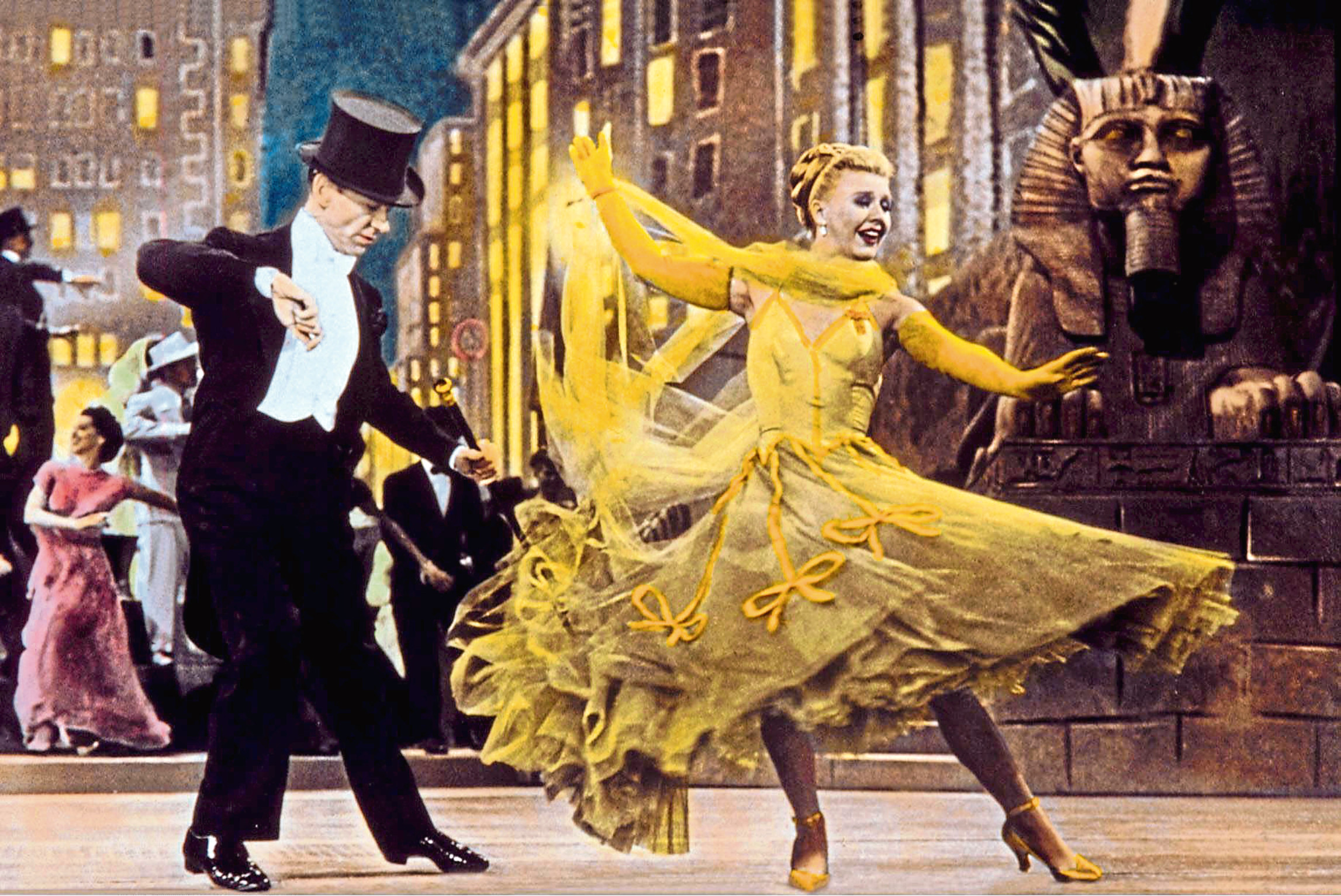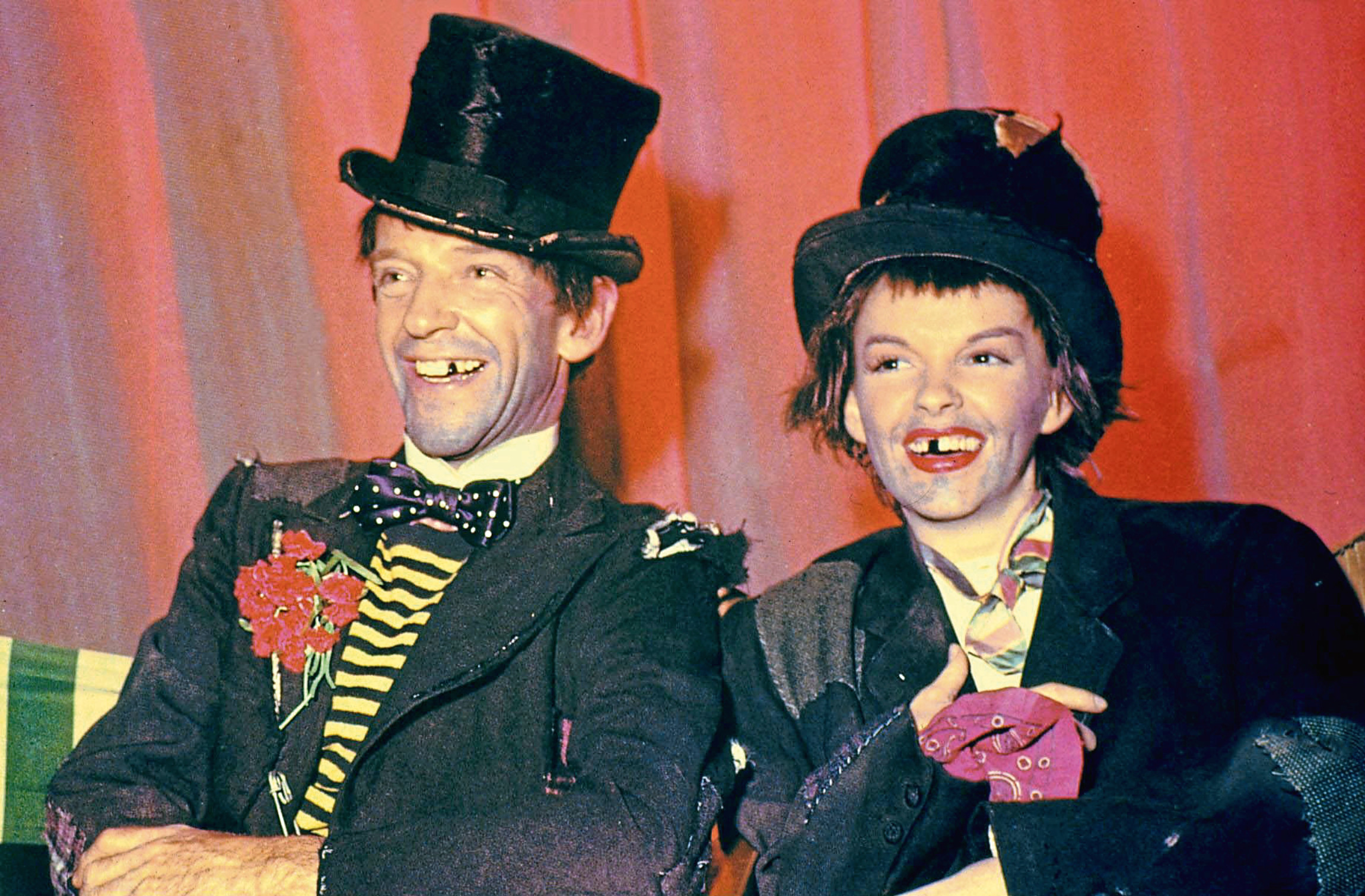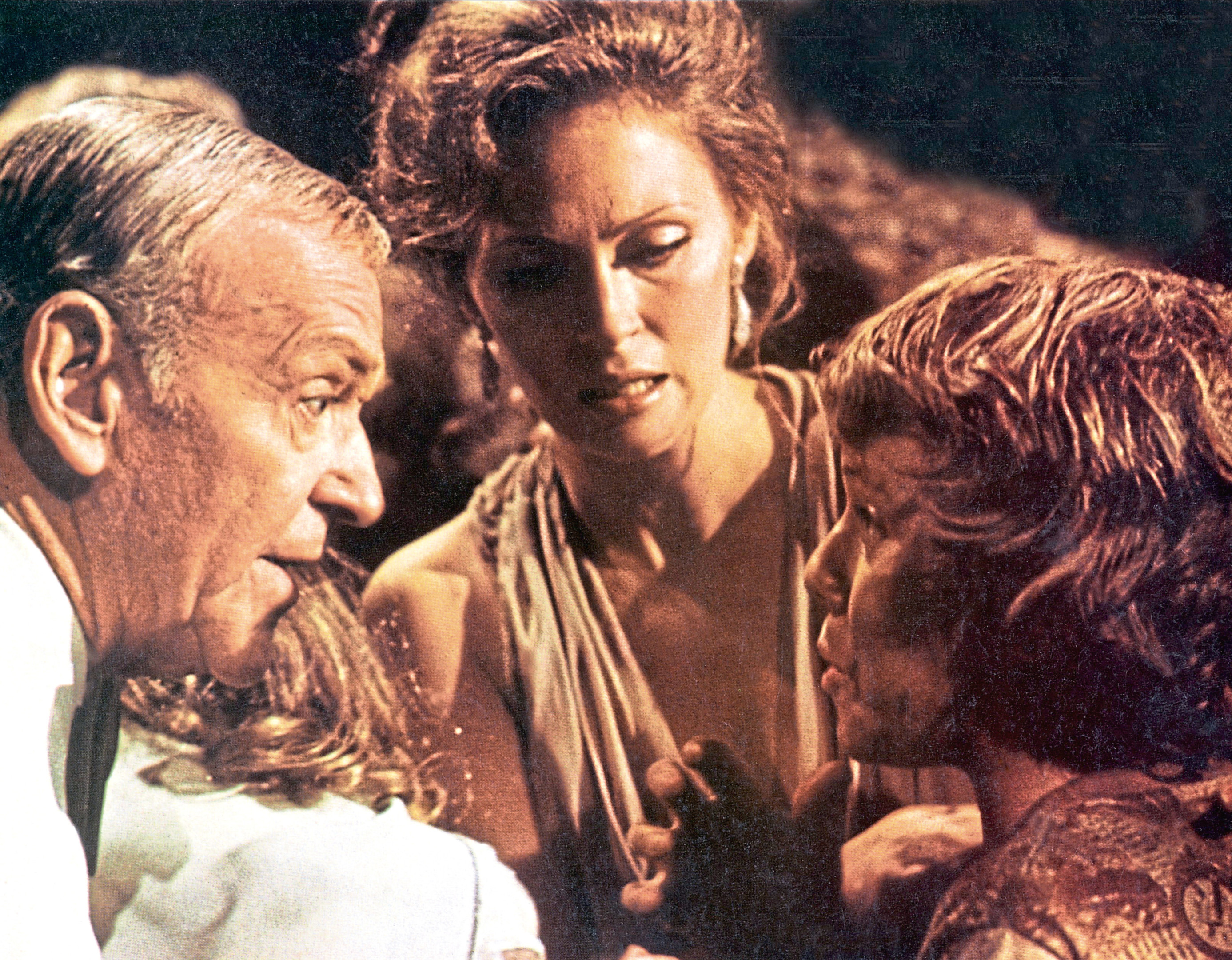
Part three – read part one here and part two here.
WE wouldn’t have had this third part of the Fred Astaire story if he had kept his word.
In 1946, the most famous dancing film star ever had announced he was planning to retire, but it didn’t quite pan out that way, thankfully.
Just two years on, in 1948’s Easter Parade, he had made his big comeback, opposite Judy Garland.
Along with Ann Miller and Peter Lawford, Fred played a dancer let down by his beau, who fancies Lawford. While drowning his sorrows, he mentions that he will turn the next girl he sees into a dancer just as good as his ex, and at that moment Judy Garland walks past.
With songs like Beautiful Faces Need Beautiful Clothes and A Fella With An Umbrella, it’s a feelgood, fun movie, with the standout number being the classic A Couple Of Swells.
All of which, and the inevitable success that followed, made folk wonder why on Earth Fred Astaire had thought of retiring.
Probably being fabulously rich and having achieved all he’d dreamed of played a part – Astaire also had his Fred Astaire Dance Studios to run, and he made some nice cash from his horse-racing interests, too.
But his smash hit with Garland seemed to recharge his enthusiasm, and it was the following year he would once more get together with Ginger Rogers for their swansong, The Barkleys Of Broadway.
Royal Wedding, done in 1951 with Jane Powell and Peter Lawford, was a roaring success, but in the new decade Astaire also suffered a couple of disastrous movies.
The Band Wagon, from 1953, wasn’t one of them. Considered one of the greatest musicals ever, it cost so much that the massive crowds it drew still failed to make a profit.
Not long after, MGM let Fred and many other huge names go, as the proper dawn of television began eating into the potential of movies.
Films had to be made cheaper, their stars had to be paid smaller salaries, and the studios had to make fewer movies than they used to.
Sadly, real tragedy would strike next, just as Fred was preparing for Daddy Long Legs, a movie set for 1955 release. In ’54, his beloved wife, Phyllis, suddenly died of lung cancer.
Fred was so distraught that he even offered to pay all costs out his own pocket and simply walk away from the movie to grieve. He was talked out of it by Johnny Mercer, one of the greatest songwriters of all time.
Mercer told him that he should work his way through the bereavement and, while Astaire took his advice but saw only moderate success with the film, it did help him through a dreadful period.
He teamed up with Audrey Hepburn for his next one, Funny Face, and followed it with Silk Stockings opposite Cyd Charisse – it seems incredible now, but neither pairing brought a high-grossing hit.
It was around this time that he hung up his dancing shoes and, if we thought Fred Astaire wouldn’t be the same onscreen without dance, On The Beach proved us wrong.
The strange, dark 1959 movie about nuclear war sounded like the last thing you’d expect to see Fred in, but he got rave reviews for his dance-free, dramatic acting.
There was more to this guy than twinkle toes!
Although he would never dance in his movies again, he did film four musical specials for TV, between 1958 and 1968, which won Emmys.
The first one, in ’58, was the very first major broadcast to be recorded on the new-fangled colour video tape, and has been restored recently, six decades later.
It was as Julian Osborne, however, in On The Beach that many people who had watched his films for years realised just what an acting talent he was, without having to resort to dance or song.
Nominated for a Golden Globe as Best Supporting Actor, he was pipped at the post by the amazing Stephen Boyd in Ben-Hur, but his skills would earn him several more non-dancing roles, on TV and the big screen.
Not that musicals were finished – in 1968, Fred would star alongside Petula Clark in Finian’s Rainbow, which would be a massive hit.
Made by Francis Ford Coppola, who in a few years would be giving us The Godfather, Apocalypse Now and several great movies, it was a weird and wonderful tale.
Astaire was Finian McLonergan, who flees Ireland with a pot of gold hidden in a carpetbag, daughter Sharon alongside him.
She, of course, was played by Our Pet, and the pair created a lovely chemistry together. When the leprechaun Og, keen to get his stolen gold back, pursues them, it all gets very silly and very enjoyable.
Until Petula – sorry, Sharon – is accused of being a witch and set to be burned at the stake.
Produced at a time when movie musicals were fading out, and with Fred clearly showing his age, some critics panned it, later to change their minds.
The vast numbers who came to give it a chance, and see a very good British dancer, Tommy Steele grab many scenes, were more than happy with it. The movie got multiple nominations and awards.
Despite the critics pointing out that he was getting on a bit (he was only 69!), Fred continued to act into the 1970s, when he also went into his 70s.
He would often pop up on TV, such as a role as the father of Robert Wagner’s character in It Takes A Thief.
And he was pretty unmissable in 1974’s The Towering Inferno. He danced with Jennifer Jones and even received his only Academy Award nomination, as Best Supporting Actor. Not bad, for a written-off 75-year-old.
He also did voice work, such as in the animated TV specials Santa Claus Is Comin’ To Town and The Easter Bunny Is Comin’ To Town.
A trip to London in the summer of 1975 also saw him working far more feverishly than a man of his years should – but it was nothing to do with acting in front of a camera.
That summer, in the British capital, he recorded not one but three albums, and many still reckon Fred’s real dream was to be involved with songwriting and music, despite all of the dance success.
Attitude Dancing, They Can’t Take That Away From Me and A Couple Of Song And Dance Men — duets with Bing Crosby — were all recorded in a blaze of musical energy.
For a man so known for dance, it must have been frustrating in his earlier years that he didn’t have the time to just write and record songs, his own and other people’s.
He was clearly making up for it now, although he did take time to talk at length about the routines behind his dancing and his choreography.
“Working out the steps is a very complicated process, something like writing music,” he revealed.
“You have to think of some step that flows into the next one, and the whole dance must have an integrated pattern. If the dance is right, there shouldn’t be a single superfluous movement. It should build to a climax and stop!”
Working out his moves wouldn’t always come so simply, and he often spent hours or days banging his head in frustration, until suddenly what he wanted to do became clear.
“For maybe a couple of days we wouldn’t get anywhere, just stand in front of the mirror and fool around,” he’d say of his working methods with longtime collaborator Hermes Pan.
“Then suddenly I’d get an idea or they would, and you might get practically the whole idea of the routine done that day.
“But then you’d work on it and edit it. It might take sometimes as long as two, three weeks to get something going.”
When Fred landed an unexpected role on TV series Battlestar Galactica in 1979, he was guaranteed some instant fans.
He had only tried to get it to please his grandchildren, who loved the series.
It’s safe to assume they loved it even more with their grandfather in it, and he even did a little dance in it, the very last time he danced onscreen!
If he loved pleasing his grandkids, Fred also enjoyed being praised by other stars famed for their dancing – from Gene Kelly to Rudolf Nureyev, Michael Jackson to Margot Fonteyn, they all lavished praise on his nimble feet and on his choreography.
In fact, Mikhail Baryshnikov, one of the greatest ballet dancer in history, described Astaire as “a genius, a classical dancer like I never saw in my life”.
He did have one major surprise left in him, and on June 24 1980, he married for the second time, more than a quarter of a century after his beloved Phyllis had passed away.
Aged 81, he wed Robyn Smith, a jockey 45 years his junior.
Sadly, they wouldn’t be together terribly long, Fred Astaire died of pneumonia at 88, on June 22 1987.


Enjoy the convenience of having The Sunday Post delivered as a digital ePaper straight to your smartphone, tablet or computer.
Subscribe for only £5.49 a month and enjoy all the benefits of the printed paper as a digital replica.
Subscribe
